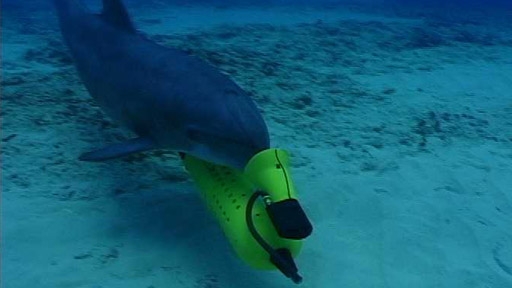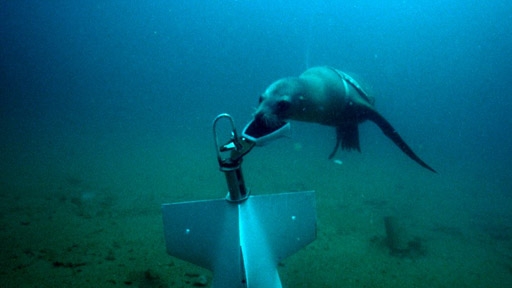 Image: U.S. Navy Marine Mammal Program
Image: U.S. Navy Marine Mammal Program
Dogs aren’t the only combat partner for the U.S. Military – so are some marine mammals.
Since the 1960s, the U.S. Navy has used marine mammals to detect and find targets underwater. California sea lions and bottlenose dolphins, in particular, are uniquely able to identify aquatic hazards.
 Image: U.S. Navy Marine Mammal Program
Image: U.S. Navy Marine Mammal Program
Sea lions have excellent eyesight and easily detect things that are out of place. As semi-aquatic marine animals, they are well adapted for living both on land as well as diving at great depths. Sea lions are also very smart and can easily be trained by handlers, making them formidable partners for the U.S. Navy to find targets. Trainers work with sea lions to find and mark important objects by attaching clamps. The clamps are then used to reel in these dangerous items.

Image: U.S. Navy Marine Mammal Program
Bottlenose dolphins are also well adapted to searching for risky targets, such as underwater bombs or intruders. Dolphins have extremely precise sonar, which allows them to create detailed acoustic pictures of their environment. Even in poor light conditions, their ‘biosonar’ capabilities allow them to distinguish between objects from over 50 feet away. Like sea lions, dolphins are also sought after due to their high intelligence.

San Pedro, Calif. (May 24, 2005) – Navy marine mammal handler Electronic Technician 2nd Class Eric Kenas shows how a trained dolphin reacts to different hand gestures, during Lead Shield III/Roguex V, an exercise to test port facility anti-terrorism readiness. The Coast Guard and Navy conducted the two exercises around the ports of Los Angeles and Long Beach. The combined exercise involved 24 local, state and federal agencies in an effort to disrupt a simulated terrorist attack, respond to the consequences and maintain port operations. U.S. Navy Photo by Illustrator Draftsman 1st Class Pierre G. Georges (RELEASED). Public Domain, Link
PBS’s Frontline explained, “The Marine Mammal Program was originally classified, and was at its peak during the Cold War. The Soviet Union’s military was conducting similar research and training programs in the race to dominate the underwater front. At one point during the 1980s, the U.S. program had over 100 dolphins, as well as numerous sea lions and beluga whales, and an operating budget of $8 million dollars.”
Despite the successes and unique capabilities of these animals, numerous controversies have surrounded the program’s existence, including the alleged mistreatment of animals in the program. The mammals will subsequently be replaced in the coming years by new robotic technologies, such as the General Dynamics Knifefish, an autonomous unmanned underwater vehicle.
Video:




